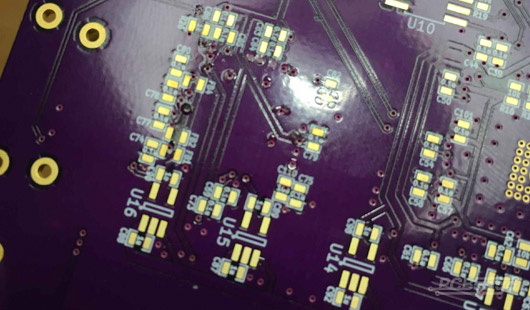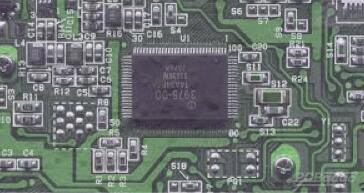Why Is The Surface of Circuit Board Blistering?
For electronic engineers, there are some explanations you need to know why is the circuit board on the surface blistering. Now PCBGOGO will explain for you.
Introduction
In fact, the circuit board on the surface is blistering, which refers to poor joint adhesion, what’s worse, there is inferior quality on the PCB surface, including two aspects as the following: 1. the problem of cleanliness on the PCB surface; 2. micro-roughness on the surface. So the reasons why the all the boards are blistering is that can sum up above two points.
Poor or low adhesion between the plating, make it difficult to resist the problems of stress in the PCB manufacturing process, such as plating stress, mechanical stress as well as thermal stress and so on, while leading to various separation phenomenon between the plating.

The factors to inferior quality on the PCB surface
Now there are some conclusions about the factors to inferior quality on the surface of circuit board in the PCB manufacturing process:
1. The problems of process for substrate. It is not appropriate to print the board with printing machine especially for some thin substrates (generally 0.8mm below), because the substrate has a poor rigidness. It may not have a great effect on removing the protective layer, which is used for prevent the copper foil on the PCB surface from oxidation with special treatment in the substrate manufacturing process, despite the layer is thin and the printed board is easy to be removed, it’s difficult to do with chemical treatment. So it should pay more attention to controlling in the PCB manufacturing process to prevent the PCB surface from blistering because there is poor adhesion between substrate copper foil and chemical copper, what’s worse, there also will be some problems when blacking in the thin inner layer, such as poor black and brown oxidation, uneven color, as well as bad partial black and brown oxidation and so on.
2. There are some phenomenons in machining process (drilling, lamination,milling and so on), such as oil stain or other liquid dust pollution and poor surface treatment.
3. Poor plating through hole of printed board. There will be blistering for the hole in the process of electroless copper deposition, plating, hot air leveling as well as soldering and so on, because there is excessive pressure on the plate before electroless copper deposition, leading to deformation of hole aperture and even leakage substrate, however, too heavy printing will increase the copper roughness on the hole despite there is no leakage substrate for the printing board, so it is easy to create the excessive roughness on the copper foil in the mircoetching and roughening process, as well as inferior quality, there is no doubt that it should pay more attention to improving the control of printing board process, which can do it best for process parameters with wear test and water film test.
4. Washing problem. There will have some problems, such as cross contamination, poor partial treatment or bad treatment, uneven defect, poor adhesion and so on, because electroless copper deposition is treated with mass chemical medicine, too much all kinds of acid and alkali and other organic solvents, unclean washing problem, especially the degreaser is adjusted by electroless copper deposition. So pay more attention to controlling over washing, including cleaning water flow, water quality, washing time, as well as the control to drip time of board and so on, especially it needs to pay attention to controlling to the washing because it’s cold in winter, and washing has little effect.
5. Mircoetching in copper pretreatment and pattern plating. excessive mircoething will lead to some problems, such as leakage substrate on aperture, blistering on aperture, and short mircoetching also lead to insufficient adhesion and then there is blistering, so it needs to strengthen the control of mircoetching; in general, the mircoetching depth of treatment before copper plated is about 1.5--2um, and pattern plating is 0.3--1um, it is better to control the mircoetching thickness and the rate of erosion with chemical analysis and testing weighing method if condition allows; generally, the board surface has a good looking, such as bright color with pink, no reflection; however, it could be explaining there is some potential quality problem pretreatment if the color is uneven, and being reflection; to pay attention to strengthening the checking; in addition, there are some projects should pay attention, such as the copper of mircoetching, bath temperature, loading, mircoetching agent and so on.

6. Poor rework for electroless copper deposition. There will lead to blistering on the board because poor stripping, wrong rework, or improper control of mircoetching time in the rework process for some reworking board of electroless copper deposition or pattern transfer, if the rework of electroless copper deposition has the problem of poor plating on the line, it can degrease directly after washing and rework for pickling without etching, you’d better not degrease and mircoetch again, for the thickening board, it needs to strip in the mircoetching bath, and pay attention to controlling the time, testing the stripping time with one or two boards to make sure the stripping, after stripping it needs to brush slightly and then fabricate the board with electroless copper deposition, however, please adjust to the mircoetching time.
7. Oxidation on the board in the PCB manufacturing process. If there is oxidation for the plated through hole PCB in the air, which not only lead to blistering on the board, but also there may be not copper in the hole and rough PCB surface, if the plated copper PCB is depositing for a long time, the board will be oxidized and the oxidation film is difficult to remove, so the plated copper board needs to do with thickening on time in the PCB manufacturing process, it is improper to deposit for a long time, in general, it needs to finish within 12 hours.
8. Strong active of copper plated. The content of three main components in the copper plated cylinder or bath, especially excessive copper, which lead to some problems, such as the active is strong in the bath, deposit of copper plated is rough, hydrogen and cuprous oxide is too much to result in the quality of plating properties is going off and poor bonding; it could take measure as the following: reduce the copper contents, add pure water to bath, improve the complexant and stabilizers properly, reduce the temperature of bath and so on.
9. Washing is poor after developing in the pattern transfer process, placing is too long after developing or dust is too much in the workshop, which lead to poor cleanliness on the board, fiber is not good, and it would be a potential quality problem.
10. Plating has organic pollution in the bath, especially oil stain, it’s more likely to appear for automation line.
11. It should pay attention to make a change on time for acid dip tank before copper plated. There would have the problems of cleanliness on the board, and lead to the defect of rough board as its pollution is too much in the bath, or copper is too high.
12. In addition, it needs to focus on the electric slot of board as bath is without heating in the manufacturing process in winter, especially the coating bath with air agitation, such as copper-nickel; in winter, it’s better to clean with warm water before nickel plated ( the temperature is about 30--40°C),making sure the deposit of nickel coating is great in dense in the early stage.
Conclusion
There are so many reasons resulting in blistering in the practical manufacturing process, we have no choice but to make a brief analysis, every coin has two sides, We should make a concrete analysis of each specific question as to different equipment technology level of manufacturer has different blistering reasons; PCBGOGO makes the analysis based on manufacturing process, we hope that it could help you solve the problem.

If you have any questions, or need more information on solder mask or solder paste, please feel free to contact us with service@pcbgogo.com, we will be happy to help you.
